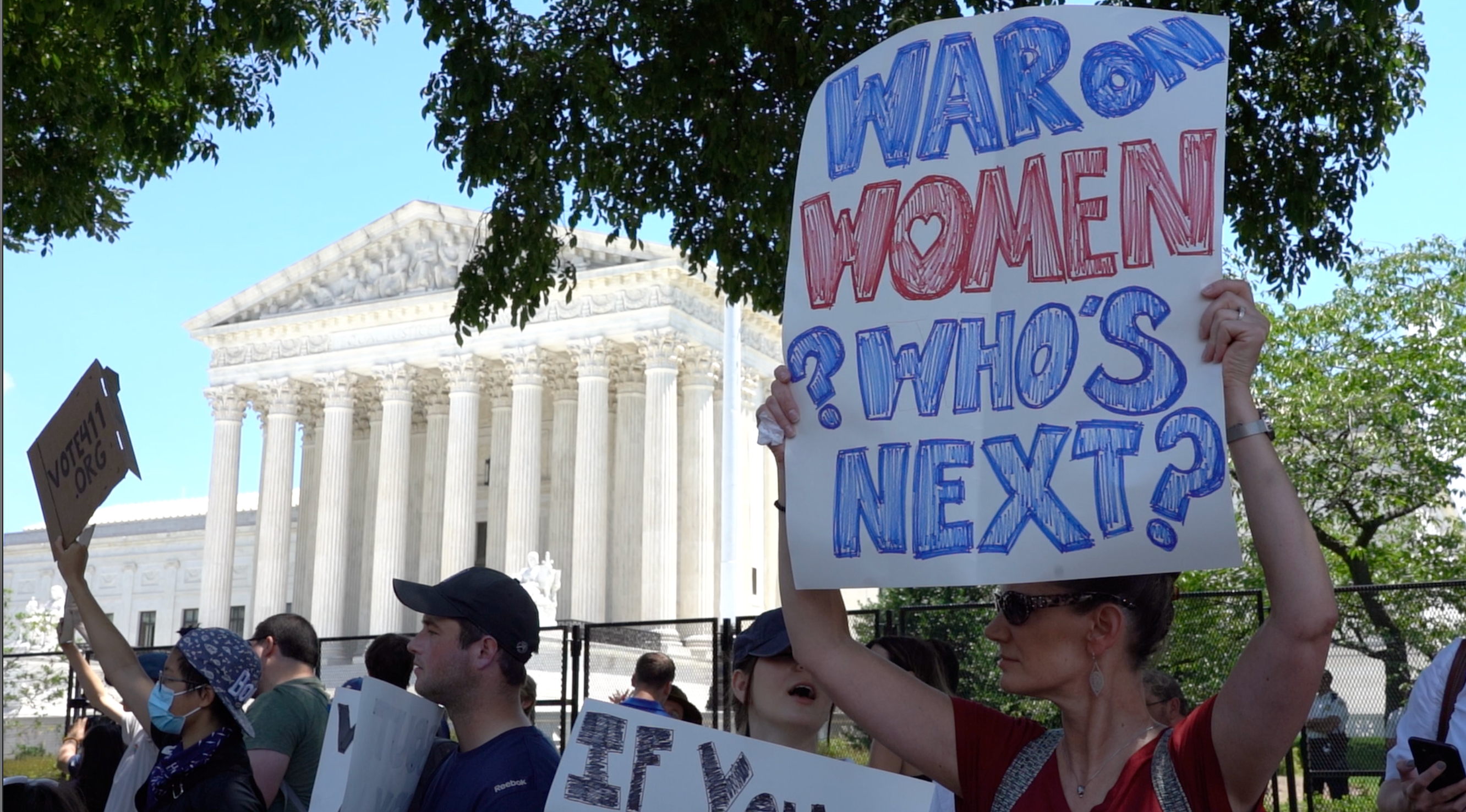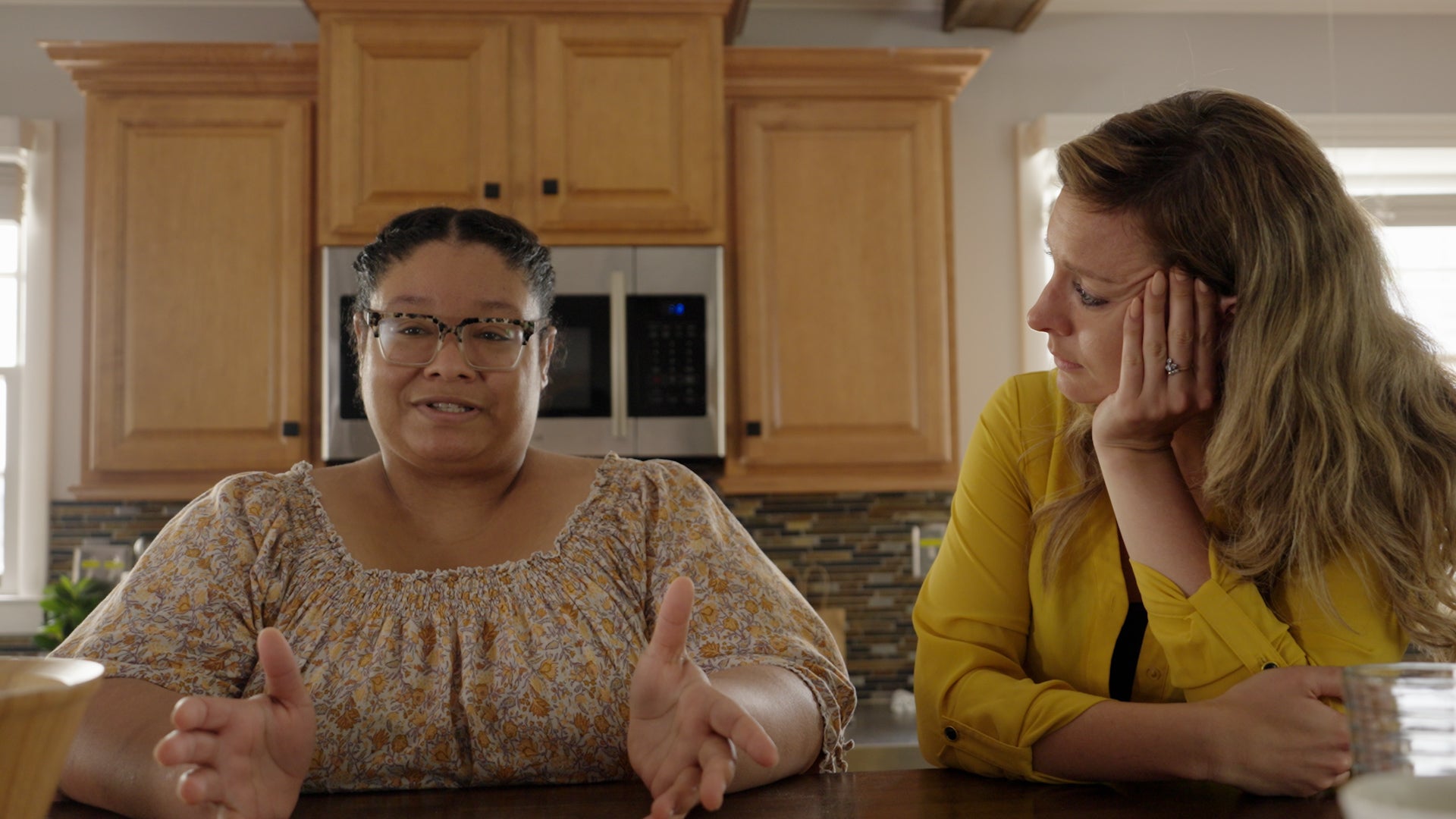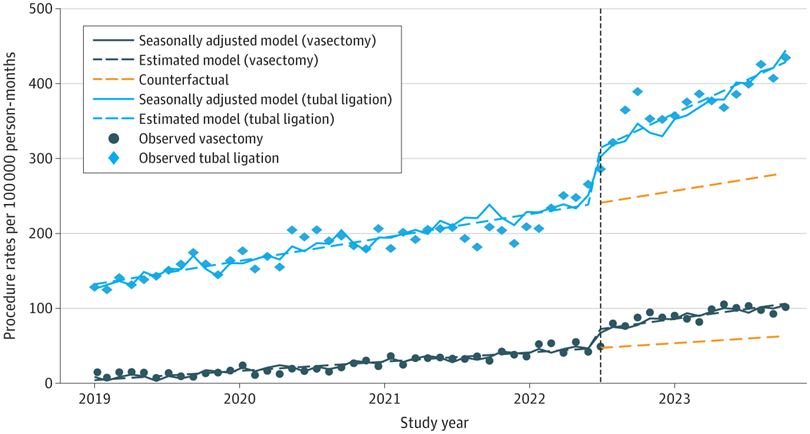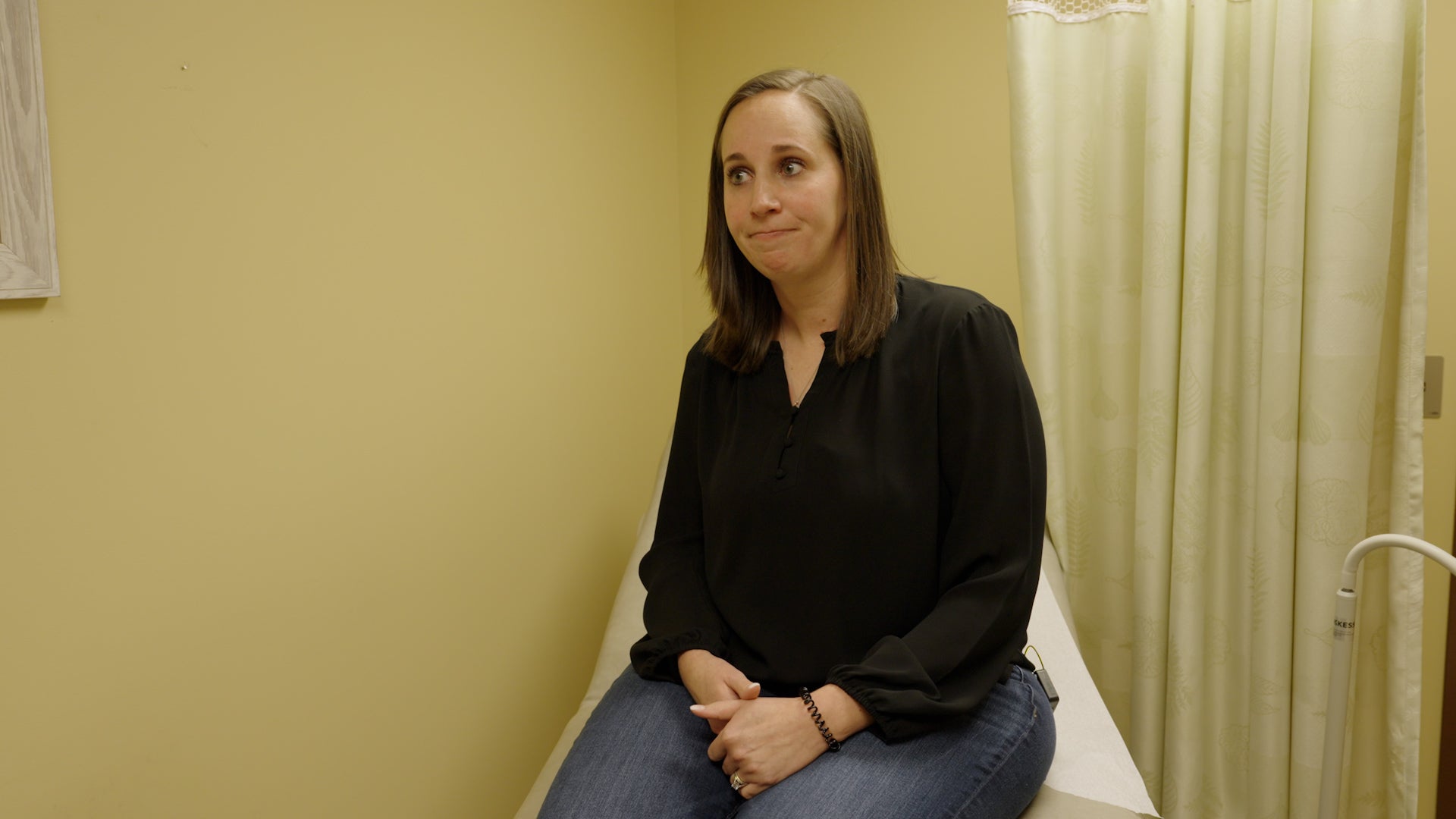This story is part of an investigative series and new documentary, The A-Word, by The Independent examining the state of abortion access and reproductive care in the US after the fall of Roe v Wade.
All three justices Donald Trump appointed to the Supreme Court ruled in favor of reversing Roe v Wade in 2022, handing a major victory to activists and their Republican allies who had fought for decades to overturn the constitutional right to an abortion.
It was a watershed moment in the battle over reproductive rights, and the two years since have demonstrated how the landmark decision’s consequences extend far beyond abortion itself, altering the landscape of women’s healthcare in the US.
Access to contraception and IVF treatments are under threat. The number of OBGYNs and abortion clinics are shrinking. Maternal mortality rates are on the rise. Physicians in some states are at risk of criminal penalties should they provide abortions. And murky laws are preventing pregnant women suffering medical emergencies from getting proper care.
Donald Trump and JD Vance won the 2024 election, and while abortion remains legal in many states, their administration could see a federal ban on the table. Trump has claimed he would veto such a ban — insisting he’ll leave the issue to the states — but his messaging on the issue has been wishy-washy. Even without a federal ban, the existing state-level laws have already damaged reproductive care across the board.
What’s next for abortion?
Since the Dobbs v. Jackson Women’s Health decision, 41 states have enacted some limits on when women can get an abortion; 13 of those states have total bans. Many women have suffered painful complications, some have lost their fertility, others have died as doctors try to navigate these new laws.
The laws may have been crafted to target abortion solely, but their murkiness has had an impact on miscarriage treatment as well. If one tragedy — losing a child — wasn’t hard enough, some women have wound up facing criminal charges after taking medication abortion, a two-pill regimen. One of those pills — mifepristone — was at risk of being restricted, but the Supreme Court unanimously ruled to preserve its access in a June decision.
The pills are still not in the clear.
JD Vance signed onto a January 2023 letter — along with dozens of other Congress members — urging the Justice Department to enforce the Comstock Act, an 1873 law originally aimed to promote sexual purity and prohibit obscenity and abortion drugs, in the hopes of blocking the mailing of mifepristone. Project 2025, a rightwing think tank’s blueprint for a second Trump term, also threatens to resurrect the vestigial law.
Supreme Court Justices Clarence Thomas and Samuel Alito even discreetly referenced the 19th-century law in oral arguments over mifepristone last term.
On the state level, in October, a Louisiana law reclassified the pair of pills as “controlled dangerous substances,” potentially delaying care. There’s a fear that the first-in-the-nation law could serve as a blueprint for other states; for now, though, the two-pill regimen remains widely available, accounting for more than 63 percent of all abortions in 2023, according to Guttmacher Institute.

Women in the 14 states with near-total bans on medication abortion now have to travel for care. More than 171,000 patients fled their home states to obtain abortion care in 2023 alone.
But patients aren’t the only ones who feel forced to travel; some doctors facing strict regulations in their states have opted to move their practices entirely.
Dr Kylie Cooper, a maternal-fetal medicine specialist who was working in Idaho, has moved her practice to Minnesota in the wake of the 2022 Supreme Court decision.
Before that, she’d regularly treated women whose fetuses had been diagnosed with lethal conditions. Then “Dobbs came and changed everything,” she told The Independent.
She’d tried to remain hopeful when a six-week ban went into effect but broke down in tears days later after treating a woman whose fetus had a “major anomaly.”
“It was the first time in my career that I was unable to provide care,” Dr Cooper said.
Dr Cooper was far from the only provider to leave. In the first 15 months after Idaho’s ban went into effect, the state lost 22 percent of OBGYNs — and the trend extends beyond Idaho.
The US is set to experience a shortage of 5,000 OB-GYNs by 2030, according to a 2021 report from the Department of Health and Human Services. The report adds that there are already too few practicing OB-GYNs to meet rising demand.
That will only make the problem of maternal care “deserts” across the country worse. More than 35 percent of counties in the US fall within that desert category, and 52 percent of counties lack a hospital that provides obstetric care, according to a March of Dimes report.
The harsh laws have also led to a decline in abortion clinics — 2020 through 2024 saw a 5 percent drop in clinics, leaving just 765 abortion clinics left across the country. When these clinics shut down, they can also cut off access to contraceptive care.
What’s next for contraception?
About 19 million American women live in regions with insufficient access to a full range of birth control methods, according to the nonprofit Power to Decide.
The consequences of this are already playing out. One year after Dobbs, states with the most restrictive laws saw a 65 percent dip in prescriptions filled for emergency contraceptives, and a 5.6 percent decline in oral contraceptive prescriptions compared with states that kept moderate levels of restrictions, a June study showed.
But that’s only part of the problem. Birth control is under attack from hardline anti-abortion activists, with some state lawmakers pitching legislation that would erode access to it, even though the vast majority of Americans — including Republicans — support contraception.
Some state abortion legislation defines pregnancy as beginning at fertilization rather than implantation, putting some contraceptives, like IUDs and emergency contraception, in jeopardy. These methods aim to prevent fertilization but also can prevent fertilized eggs from implanting in the uterus, meaning they could be characterized as abortions under this definition.
Aside from new legislation, some Republicans have called into question decades-old court rulings. In 2022, GOP Sen Marsha Blackburn called the 1965 Griswold v. Connecticut decision, which granted married couples the right to use contraceptives without government oversight, “constitutionally unsound.” Similarly, GOP Sen Mike Braun opined that contraceptive access should be left to the states.
Months later, in his concurring opinion on Dobbs, Supreme Court Justice Clarence Thomas wrote that the court “should reconsider” some other long-standing rulings, including those codifying contraceptive access and same-sex marriage. Those challenges have yet to be seen.
In light of these attacks on abortion and birth control, an increasing number of women have turned to a more extreme option: sterilization.
Nicole Blackmon is one of them. Blackmon, the woman at the center of a legal challenge to Tennesee’s abortion laws, told The Independent that she plans to get tubal ligation given her “very traumatic” experience.

She lost not one child, but two. She discovered she was pregnant in July 2022, just five months after her 14-year-old son was murdered in a drive-by shooting. She and her partner had hoped that the pregnancy would bring some joy to the dark time, but it only brought more pain.
At 15 weeks, her fetus was diagnosed with a lethal condition. Doctors recommended an abortion would be the safest option for her own health, but Tennessee’s law did not provide an exception for her situation. Without resources to travel to another state, Blackmon was forced to continue the pregnancy in Tennessee. At 31 weeks, she gave birth to a stillborn baby.
Even though she wanted more children, getting pregnant again was too risky, so she decided to get a tubal ligation — a surgery that removes part of the fallopian tubes to permanently prevent pregnancy.
“I did survive this. And if I was to give another try, already knowing what the law is right now, I might not survive the next time,” she said. “I cannot put my life on the line when it comes to the medical field right now.”
She’s not the only one opting for sterilization. Research by Dr Ellison at the University of Pittsburgh found that tubal ligations and vasectomies increased sharply among young people following the Dobbs decision. For adults aged 18-30 years, the number of sterilizations (tubal ligations) increased by 58 per 100,000 patient visits after Dobbs.

Separate research in the medical journal JAMA confirms that sterilization rates are highest in abortion-banned states, with rates climbing post Dobbs.
“I would say I’ve done more sterilization procedures in the last two years than I’ve done in my entire career,” said Dr Laura Andreson, an OBGYN in Franklin, Tennessee. Most of her patients have found her from a Google Docs list, created shortly after Dobbs, naming physicians who will perform sterilizations.
Dr Andreson performs both tubal ligation and tubal removal, technically called a salpingectomy. Tubal removals are irreversible while tubal ligations would require an expensive “major surgery” to put both ends of the tube back together, but she warned: “Success rates aren’t great on that.”
She’s seen a variety of patients. Some young, some in their 40s, and even some whose husbands have had a vasectomy but asked to have the procedure out of fear of becoming pregnant if they were to be raped.
“I mean, people are afraid of a traumatic event then escalating into even more traumatic events that they have to leave the state to get care,” Dr Andreson said. Tennessee’s abortion ban makes no exception for rape.
A majority, though, have come to her knowing they don’t want to have children but had been previously advised against the procedure by other doctors because they are too young or haven’t had a baby yet. She offered a counter: “I think that you have the right to decide to not have children just as much as you have a right to have children.”
If a patient decides to have children after a tubal removal surgery, Dr Andreson said the “only” option is IVF.
What’s next for IVF?
The future of IVF is also uncertain.
A recent Alabama Supreme Court decision launched the fertility treatment into the national spotlight when in mid-February, the state’s highest court ruled that couples who had frozen embryos destroyed in an accident could pursue wrongful death lawsuits, determining that they could be considered children under state law.
The ruling sparked immediate questions over how IVF facilities could legally use and store embryos. Following a major outcry and weeks-long media frenzy over the decision, the state’s legislature passed a measure to shield doctors who perform IVF services from criminal and civil liability. But the decision’s impact lingered, reigniting fetal personhood arguments, which would give fetuses the same legal rights as a person and upend IVF.
Jeopardizing IVF services could threaten opportunities for many different people who rely on the procedure to have children, including those who are infertile, LGBTQ+ individuals, single people, and those who want to screen for genetic disorders. The process is expensive and not always successful, as about half of IVF procedures in women 35 and under result in a live birth.

Samantha Castro and her husband, who live in Tennessee, both carry a recessive trait for a form of dwarfism that’s potentially terminal, meaning they had a 25 percent chance that their child would be born with the condition. After their daughter was born, the parents were initially told their daughter would only live a week. She required cataract surgery and had a heart defect. At three, she had her tonsils and adenoids surgically removed.
“We knew we wanted to have more children, but we didn’t want to have another child with a terminal illness because while she was doing okay, she wasn’t necessarily a super healthy child,” Castro told The Independent. “We knew if we had another child with her disease that she would probably die or the new baby would because we couldn’t provide the quality of care that two children with her disease needed.”
The couple then had a baby boy. He’s a carrier for the condition, but doesn’t have it.
But while she was six months pregnant with her son, the couple’s daughter died. The couple decided: “We can’t roll the dice anymore. We can’t try and see if naturally we could have a baby without it and abort because it would just be too much for us,” Castro said. So, they tried IVF. The first round resulted in a miscarriage but the second was a success: “That got us our son.” He is the only person in her family who is not a carrier, she said.
As the attacks have ramped up against IVF, she asked her doctors: “What happens to our frozen embryos if we decide not to have any more? Are we going to get legally charged with something?”
The answer to that question remains unclear, with fears that the current laws in many states are simply too murky to fully protect IVF treatments.

Ongoing legal challenges to these restrictive laws persist across the country, but some states are working to tighten their laws as women flee to other places for abortion care.
Conservatives in Alabama, Idaho, and Tennessee are pushing so-called “abortion trafficking” laws, which would prosecute those assisting pregnant women to travel across state lines to obtain abortions. None of them have gone into effect as they are being challenged.
In Georgia, a judge overturned the state’s six-week ban, the LIFE Act, calling it unconstitutional in early October. The judge explained: “It is generally men who promote and defend laws like the LIFE Act, the effect of which is to require only women — and, given the socio-economic and demographic evidence presented at trial, primarily poor women, which means in Georgia primarily black and brown women — to engage in compulsory labor, i.e., the carrying of a pregnancy to term at the government’s behest.”
The abortion rights victory in the swing state may only be fleeting. The state’s attorney general appealed the ruling, asking the Georgia Supreme Court to reimpose the ban. History may repeat itself; in 2022, the same judge decided the ban was invalid, but just a week later the state’s highest court overturned it, reinstating the restrictions.
Meanwhile, in Tennessee, seven women who were denied abortions and two doctors are challenging how the state’s ban is applied to patients suffering medical emergencies. Lawyers argued before a three-judge panel in April and have yet to hear a ruling. Blackmon is the lead plaintiff in the case. She felt compelled to join the suit after her experience: “There are women that might in the future end up in my situation and I want them to at least have a better chance of having the rights to have a better option to what I did.”
These bans don’t discriminate. Anyone’s mother, sister, aunt, daughter or friend could be impacted. They affect women of all ages, the insured and the uninsured, those with children and those who don’t want children, survivors of rape or incest, as well as women and their fetuses suffering life-threatening conditions.
Perhaps the question shouldn’t be what’s next, but who.
!["[T]he First and Fifth Amendments Require ICE to Provide Information About the Whereabouts of a Detained Person"](https://images.inkl.com/s3/publisher/cover/212/reason-cover.png?w=600)






